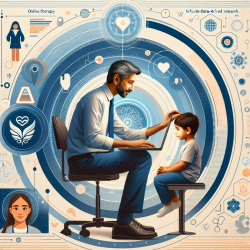Introduction
As a speech-language pathologist, understanding the factors that contribute to happiness can significantly enhance your practice, particularly when working with children. The systematic review "Health, Hope, and Harmony: A Systematic Review of the Determinants of Happiness across Cultures and Countries" provides a comprehensive analysis of what constitutes happiness across different cultures and contexts. This blog post will explore how you can implement these findings to improve outcomes for children.
The Integrated Model of Happiness
The research categorizes the determinants of happiness into three main areas: Health, Hope, and Harmony. Each of these categories encompasses various factors that contribute to overall well-being and happiness.
Health
Health is a cornerstone of happiness, encompassing mental, emotional, and physical well-being. For children, promoting a healthy lifestyle can include:
- Encouraging physical activity to boost mood and cognitive function.
- Supporting mental health through mindfulness and stress-reduction techniques.
- Ensuring a balanced diet to support physical and mental health.
Hope
Hope involves fostering a sense of purpose and goal achievement. Practitioners can nurture hope in children by:
- Setting achievable goals and celebrating small victories to build confidence.
- Encouraging positive thinking and resilience in the face of challenges.
- Providing opportunities for personal growth and learning.
Harmony
Harmony relates to social, familial, cultural, and environmental factors. To enhance harmony, consider:
- Building strong, supportive relationships with peers and family.
- Encouraging participation in community and cultural activities.
- Creating a positive and inclusive environment for learning and growth.
Implementing the Findings
By integrating these determinants into your practice, you can create a holistic approach to fostering happiness in children. This involves not only addressing speech and language challenges but also considering the broader context of each child's life. By doing so, you can help children develop the skills and mindset necessary for long-term happiness and success.
Encouraging Further Research
While this review provides valuable insights, it also highlights the need for ongoing research into the determinants of happiness. Practitioners are encouraged to stay informed about new findings and consider how they can be applied to enhance their practice. Collaborating with researchers and other professionals can also provide new perspectives and strategies for supporting children's well-being.
To read the original research paper, please follow this link: Health, Hope, and Harmony: A Systematic Review of the Determinants of Happiness across Cultures and Countries.










